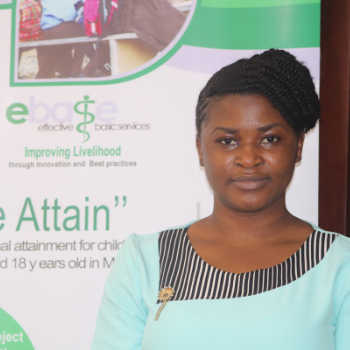Soaring on The Wings of Collaboration; the Case of Effective Basic Services (eBASE) in Cameroon Africa
"Building connections and collaborations has been the blood vessel through which eBASE has been thriving."
Introduction
eBASE Africa is a leader in the research ecosystem of Africa, where they are actively involved in evidence generation synthesis, translation, and implementation. It has its headquarters in Bamenda, Cameroon, where it was created in 2016 with branches in Yaoundé and satellite offices across Africa. eBASE seeks to make basic services more effective through the use of innovation and research evidence.
eBASE was borne within a contextual consciousness that most interventions promoted by government and development agencies could be made more effective if best available evidence was rigorously curated and used in policy, practice, and households – and especially for underserved populations. A typical example is the story of circumstances surrounding the birth of baby Elikia into the home of one of the founding members contributed to the birth of eBASE. Baby Elikia was born at 27 weeks at a health facility that had state of the art baby incubation gadgets donated by GIZ. These incubators were not being used by the health team at the hospital, with the complaint that ‘it makes too much noise’ – ‘noise’ meaning the several alarms on the incubator. Baby Elikia’s mother was able to search manuals of the machine and was able to save her baby using the incubators and Kangaroo care. Elikia’s mother, being educated, was able to read the manual for the machine and operate it while conducting Kangaroo care. Through this act, baby Elikia was saved, while hundreds of babies died during her 3-months stay at the primary care facility.
The thoughts on how to contribute to changing the narrative for basic services like education and health led to the birth of eBASE Africa. So, in a quest to make basic services more effective came the birth of eBASE Africa.
Connections and Collaborations at eBASE
Building connections and collaborations has been the blood vessel through which eBASE has been thriving. Below shows different approaches at different stages where eBASE builds collaborations for the work it does. The organisation works with consumers, practitioners, non-literates and policy makers. eBASE then connects with the wider global evidence community to tap into freely available evidence resources like those from the Africa Evidence Network, Cochrane, Campbell, Joanna Briggs, Guidelines International Network, Education Evidence Network, among others.
Firstly, eBASE uses community participation in its projects to promote systematization and ownership. They collaborate with stakeholders at different levels of the project through stakeholder sessions to co-create, co-design and co-implement their projects. At the co-creation and co-design phase, eBASE collaborates with stakeholders through key informant interviews, focus group discussions and stakeholder engagement sessions to validate an intended intervention, and decide on expected results. At implementation, collaboration happens through feedback and stakeholder sessions.
At dissemination level, eBASE partners with different stakeholders differently to disseminate results. For example, eBASE collaborates with policy makers through policy events to facilitate uptake of research into policy, which has led to strong partnerships between the organisation and the Cameroonian government. For example, eBASE has established Memorandums of Understanding (MOUs) with the 5 allied ministries of education in Cameroon. One of the agenda they are pushing through this collaboration is the creation of nursery schools which is a sub-sector dominated by private bodies in Cameroon, hence expensive for the underserved.
Also, eBASE collaborates with the non-literate’s population and consumers through arts and storytelling to disseminate evidence in the most digestible format to facilitate evidence uptake and for evidence-informed decision-making (EIDM).
eBASE at the global scenes seizes every opportunity to build connections and establish collaborations with potential stakeholders, funders and partners.
Through the above-mentioned connection and collaboration strategies, eBASE over the years has been able to build trust and networks both locally and internationally.
The organisation has been able to build a strong national network through partnership with the state and this has been established through MOUs. They have also built strong partnerships with local organizations, CSOs and universities for the work they do at local level.
At a Global level, eBASE has established strong networks and built trust with partners who have becomes strong allies and funders to the work done at eBASE. Examples include Education Endowment Foundation, Grand Challenges, Wakka Foundation, CEDIL, the Gates Foundation, BHP foundation, and the World Bank, amongst others. A complementary mix of networks and funders has allowed eBASE to enhance capacities of governments in Central Africa for Evidence Informed Decision Making and its own capacities.
Conclusion
It was a bold and provocative step to set-up eBASE and even in its early years, the organisation is reaping big impacts across several countries globally. Collaborations have improved understanding of existing capacities and ongoing innovations across Africa for EIDM. With lessons learned from eBASE, it is safe to say building connections at local and international level will serve an organization positively and drive the agenda of EIDM from local to global scenes, hence creating a lasting impact.
